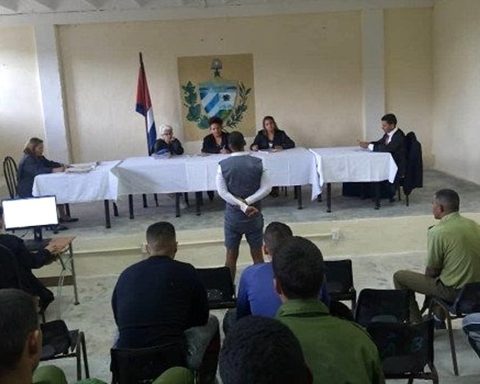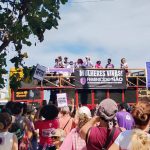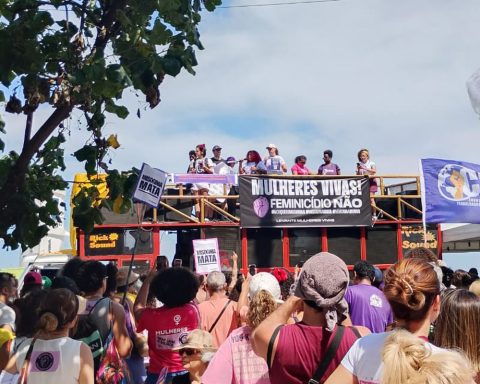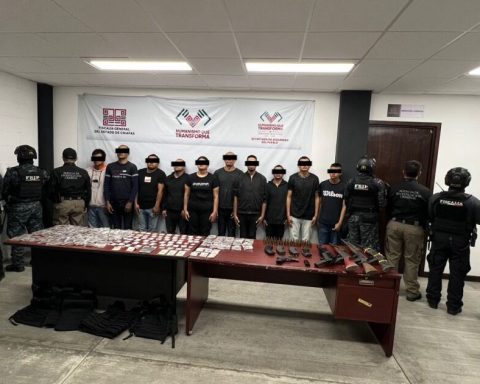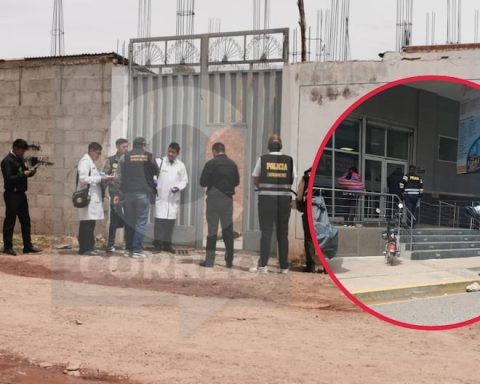Cuban urban art continues to take the pulse of the streets and the exodus that has begun after the reopening of the airports at the end of last year does not go unnoticed by musical creators. Tunes, rhymes and verses add musicality to the drama of the massive escape from the Island.
In his most recent song, the reggaeton player The creamknown for humorously portraying the reality of Cuba, hits the target of an increasingly burning issue inside and outside the country: Cuban migration.
“People migrate in search of improvement (…) Hey, and where do they go? Nicaragua, Nicaragua, Nicaragua. I’m going to Nicaragua, I’m going even if it’s in bus“, verses the catchy chorus.
the rhymes of The cream they put their finger on a sore spot about a phenomenon that has increased since the end of last year and that this week reached a new point of tension.
The musician, censored in the official media, has gained a fervent public that follows his songs, waiting to see the great national problems reflected in them. From the price of food, to the rise of the dollar in the informal market, passing through censorship, on issues of The cream Cuban reality finds space.
Since Nicaragua announced in November that it will not require an entry visa for Cubans, interest has skyrocketed among many islanders in the Central American country as the starting point for migrating to the United States.
From the price of food, to the rise in the dollar in the informal market, passing through censorship, in the themes of La Crema the Cuban reality finds space
At the end of November, as soon as Managua announced the end of visa requirements for Cubans, the offices of several airlines became a hive of people interested in leaving the Island taking advantage of the circumstance, in the midst of a political, economic and , social and human rights that has escalated after the trigger of the pandemic.
The director for Defense Oversight at the Washington Office for Latin American Affairs (WOLA), Adam Isaacson, warned at the end of January of the “dizzying” increase in Cubans who have decided to take the Central American route.
“The number has been increasing. Cuba and Haiti have been consistently (in 2021) among the five with the most presence (on the US border with Mexico),” he said at a conference at Columbia University.
In addition, according to WOLA, on the border between Mexico and the United States, there was an increase in the presence of Cubans towards the end of 2021, going from 862 in August to 7,893 in December.
this same saturday 46 Cubans were returned from Mexico to his country after having traveled legally to third countries and being detained by Mexican authorities while trying to enter the United States irregularly.
According to the official Cuban newspaper Granmamore than 1,000 Cubans were returned to their country last year by US authorities for trying to enter their territory irregularly.
The US Coast Guard (USCG) reported this Saturday that since October it has rescued 730 Cubans at sea, a figure close to that reported for the entire fiscal year 2021 (October 2020-September 2021), when 838 Cuban migrants were intercepted.
The route through Nicaragua, an old acquaintance, is a long and often dangerous road, experts warn. Warnings that seem to matter little to those who decide to undertake this 4,000-kilometer journey crossed by mafias.
The route through Nicaragua, an old acquaintance, is a long and often dangerous road, experts warn
In addition, this week several pieces of news were released that have disrupted the plans of many Cubans who were seeking to leave the country legally.
The Colombian consulate suspended, until further notice, the procedures for the transit visa, a document that allowed residents of the island to use Colombian airports and then go to a third country (such as Nicaragua).
Colombian authorities admitted that there had been a significant increase in applications in recent weeks.
The announcement did not come as a surprise: in the previous days there had been long lines of people looking for an appointment with the diplomatic legation, which had more and more problems managing the demand.
Added to this news on Friday was Costa Rica, which imposed a transit visa on Cubans and seems to want to discourage the use of the country as an intermediate stop for Cuban migrants.
Regional airlines also began to take action in this situation. On the same day as the Colombian announcement, the Panamanian airline Copa Airlines temporarily suspended ticket sales to Nicaragua.
The decision was made because “there was little availability” until a couple of weeks ago, but this has changed radically, airline sources confirmed to Efe.
In addition, the Venezuelan airline Conviasa announced in a note that it maintains its route between Havana and Managua but only for flights rescheduled due to sanitary restrictions.
For its part, the state-owned Cuban Airports and Aeronautical Services Company (ECASA) has just announced that Aruba Airlines will connect the island with Nicaragua with a daily flight, linking different cities.
The state-owned Airports and Aeronautical Services Company (ECASA) of Cuba has just announced that Aruba Airlines will connect the Island with Nicaragua with a daily flight
Many analysts point to the serious economic crisis that the country is going through as the main reason for emigrating.
The combination of the pandemic, the tightening of US sanctions and errors in macroeconomic management have generated famine, partial dollarization of the economy and high inflation.
The gross domestic product (GDP) in 2020 fell by more than 10% and only recovered by 0.5% during 2021, according to the Economic Commission for Latin America and the Caribbean (ECLAC).
Some experts also point to the increase in political repression on the island after the anti-government protests of the July 11which according to the Attorney General’s Office have led to the prosecution of 790 people, some with requests for up to 30 years in prison.
The Cuban government, for its part, points to Washington as the most responsible because, in its opinion, it fails to comply with bilateral migratory agreements and encourages irregular migration with laws that provide almost automatic regularization for its citizens.
“There is a very high share of responsibility of the United States Government in the irregular flow of Cuban citizens and illegal departures by sea,” the director of Consular Affairs and Cuban Residents Abroad of the Cuban Foreign Ministry, Ernesto Soberón.
________________________
Collaborate with our work:
The team of 14ymedio is committed to doing serious journalism that reflects the reality of deep Cuba. Thank you for joining us on this long road. We invite you to continue supporting us, but this time becoming a member of our journal. Together we can continue transforming journalism in Cuba.





